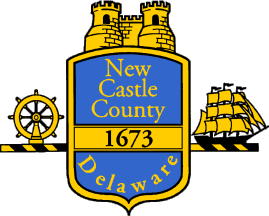What's the Scuttlebutt?
/Maybe you’ve heard that question asked before. It’s a time-worn cliché, a quaint and jokey way of inquiring as to the latest gossip, like what you might kibitz about with your co-workers around the water cooler. But what does that silly word actually mean? It turns out scuttlebutt is the term for a large wooden barrel with a hole drilled in it (that is, in mariner slang, a butt which has been scuttled). During the heady days of the British Empire, sailors in the navy would typically gather around the scuttlebutt to have a drink of water while sharing the news and gossip of the day. Essentially, it was the 19th-century maritime equivalent of the break room water cooler. By the early 20th century, the term had come to mean “gossip” in general.
This is one example of the linguistic event known as semantic shift. A great many words and phrases, even some of the most commonplace, have changed their meanings over time. It might not be surprising that happy used to mean “lucky” or witty meant “wise,” but would you ever have guessed that centuries ago the word sad meant “satiated” or that giddy meant “possessed by a demon”? A special subset of this phenomenon involves the re-appropriation of industry jargon from literal usage to a broader, figurative application. Scuttlebutt is just one of many old nautical terms that have been adopted into the mainstream. When an experienced sailor would familiarize a novice with the principal ropes and lines on the ship, it was said that he was showing him the ropes. Other words and phrases that have come to us from the sailing world include tell-tale, overbearing, taken aback, three sheets to the wind, and slush fund, to name only a few. Another is figurehead, the carved figure adorning the prow of a ship, symbolic but functionless. The word now denotes the ostensible leader of an organization or movement who has no real power.
Plenty of other industries have spawned similar figurative words and phrases. Take masonry, for example: if I say that customer service is the cornerstone of any business, I'm really referring to the stone at the bottom corner of a building, usually engraved with the date and architect’s name. In surveying, a benchmark refers to a mark placed on a stationary object for use as a reference point on a map, that is, a standard by which something is measured. Even the word broadcasting literally used to describe (and still does) an agricultural method by which seeds are scattered by hand over prepared ground, rather than sowing more deliberately via seed trays or a seed drill.
One of my favorite examples of this phenomenon arose in the printing industry. In the early days of the press, printers had to set each piece of moveable type in a locking frame called a chase, a method which took a considerable amount of time just to be able to produce a single page. They would repeat the process for each new page and for any subsequent printing runs. To save time and expense, a technique was developed that involved making a papier-mâché cast of the original chase, and then pouring molten metal into that cast to form a new solid plate of type. Now publishers no longer had to reset type every time they wanted to reproduce a particular page; they simply used that previously formed metal plate as many times as necessary. The term they coined for this device was stereotype. It was a copy of the original, and it had all of its elements pre-formatted and unmovable. The sense of the word then broadened to signify “an image perpetuated without change,” and then became further idiomatic as it approached its modern meaning. In French publishing houses they had their own special name for the stereotype plate, inspired by the clicking sound that the mold made when it first came into contact with molten metal: cliché.
And that’s the scuttlebutt!








